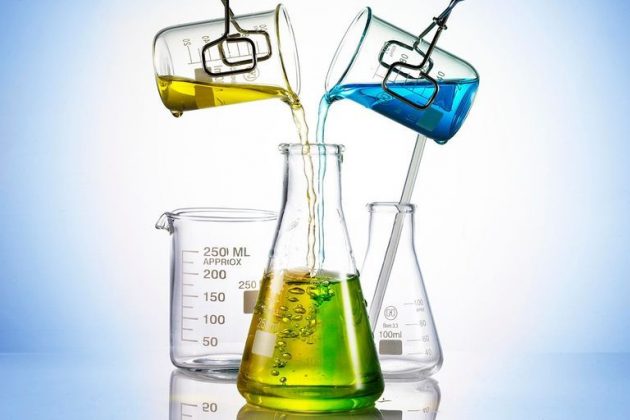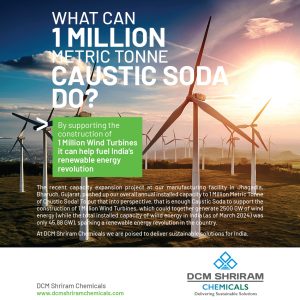This month, our columnist explains why Carbon Capture and Sequestration (CCS) is an important tool to mitigate Global Warming. The prohibitive costs of CCS make it unviable without government intervention through regulation and subsidy. Innovative applications of the captured carbon dioxide will improve the economics and hasten its adoption.
The scorching summer in Europe is yet another grim reminder, if one is still required for the Doubting Thomases, of Global Warming. In December 2015, 195 countries signed the Paris accord to collectively bring down the emission of Greenhouse Gases to limit the temperature rise to below 2 Degrees Celsius of the pre-industrial levels. Carbon dioxide accounts for 70% of the gases. Though renewable forms like solar and wind constitute an ever-increasing share of our energy requirements, coal is still being burned for generating power and oil is still being drilled to meet the transport requirements. A fossil fuel free economy is still decades away and carbon dioxide will continue to be spewed out into the atmosphere. Till the utopia of fossil fuel free economy is realised, Carbon Capture and Sequestration (CCS) is required to prevent further build up of carbon dioxide in the environment. Additionally, there is the historic emission that needs to be cleaned-up. Intergovernmental Panel on Climate Change (IPCC) recognises the importance of CCS as essential in the portfolio of carbon mitigation technologies along with energy efficient systems and renewable energy sources.
CCS
A CCS project has three components – Capture, Transport and Storage. Carbon dioxide is first captured by separating it from other gases. It is then compressed and transported by pipelines over long distances to the disposal site, where it is injected into the chosen geological reservoir. Three types of geological formations have been proposed for carbon dioxide sequestration – oil and gas reservoirs, deep saline reservoirs and unmineable coal seams. The deep ocean is another potential storehouse, but environmental concerns have been raised. CCS is conceptually simple, but since the scale is gargantuan, it is cost and energy intensive.
The primary target of CCS are the thermal power plants. But there are also industries that are attractive for CCS – Cement, Iron and Steel, Fertilisers, Refinery and Waste Incineration. Some of these emit gases that have a higher concentration of carbon dioxide than from power plants, improving the economics of CCS. For example, the flue gases from iron and steel plants contain 20-27% Carbon dioxide against 10-15% for a typical coal-based power plant.
Current Status
To date, 17 large-scale CCS facilities are in operation globally, capturing 37 million tons of carbon dioxide per annum. 220 million tons of carbon dioxide have been injected deep underground so far. Four large-scale CCS plants, with a total capacity of 6 Mtpa, are scheduled to go onstream this year in Australia, Canada and China. Significantly, CCS has also been used in smaller capacities. 15 facilities in the range of 50,000 to 400,000 tpa are either in operation or under construction.
CCS faces many challenges, almost none of them technical. The capital investments are large. The gestation period is long. The stakeholders are many. Legal and regulatory framework is non-existent. Public awareness is low or largely negative because CCS is associated with polluting fuels.
High costs pose the biggest change for widespread adoption of CCS. CCS is unlikely to be implemented on a large scale without a judicious mix of fiscal carrot and regulatory stick. In USA, already the largest CCS deployer with 9 out of the 17 large-scale facilities, there was a vocal demand for fiscal incentives to support CCS projects. In February this year, the Congress passed an act that significantly enhances the tax credit for CCS projects. Analysts of International Energy Agency (IEA) estimate that the enhanced tax credit could drive up the investments in CCS projects significantly to touch $1 billion over the next 6 years.
EOR
The reason for success of CCS in USA is that it goes hand in hand with Enhanced Oil Recovery (EOR). USA uses a lot of carbon dioxide for Enhanced Oil Recovery (EOR) projects. Carbon dioxide under pressure is injected into nearly depleted wells to force out the remaining petroleum. IEA estimates that the captured carbon dioxide will increase US crude output significantly. This paradoxical use of CCS to further increase production of fossil fuel is not looked upon kindly by environmentalists and is the main reason for the negative perception. 13 out of the 17 large-scale CCS projects are currently linked to EOR.
Concrete Capture
Many innovative applications are being developed to use Carbon dioxide. A Canadian company, CarbonCure Technologies, has patented a process to inject carbon dioxide into wet concrete mix, where it reacts with calcium to form nano-sized calcium carbonate particles that finally get embedded in the concrete. The process claims to improve the compressive strength of concrete by as much as 20%. Designers can thus use less amount of cement, which will reduce emission further. A concrete producer in USA has been using this process since 2016, buying captured carbon dioxide from a fertiliser plant. More than 60 concrete plants across Canada and USA are using this carbon dioxide injection technology. The technology has the potential to reduce carbon dioxide emissions by 700 million tpa globally.
Feedstock
Another Canadian company, Carbon Engineering uses carbon dioxide to synthesise fuels – gasoline and diesel. The process uses renewable electricity to generate hydrogen from water and combines it with captured carbon dioxide. Funded by Bill Gates, a prototype plant is already in operation since October 2015.
UK-based Econic Technologies has developed a process that uses Carbon dioxide as a feedstock to make Polyols. Polyurethane foams made from such Polyols have demonstrated superior performance in fire retardance and smoke generation. The company is targeting a 30% market share by 2027, which will reduce carbon dioxide emissions by 3.5 million tpa annually.
In Tuticorin, carbon dioxide from a coal-based power plant is captured and used to produce Soda Ash. The process, a brainchild of a London based start-up by IIT alumni, uses a proprietary solvent and will lock up 60,000 tons of carbon dioxide annually.
Carbon dioxide captured from flue gases has also been used for cultivating fast growing algae. The algae in turn is a good feedstock for biofuel production.
Epilogue
CCS costs are prohibitively expensive to be economically viable without government support and public funding. Three of the world’s largest oil companies have appealed to Norway to maintain funding support for CCS projects. Funding is coming under increased public pressure because the costs of rival green technologies like solar and wind are plunging. Environmentalists are concerned that adoption of CCS will only delay the progress of renewable energy. Also, the consequences of burying carbon dioxide deep underground are not fully understood. The tragedy of CCS could very well be that it is not “visible”.
Readers’ responses may be sent to k.sahasranaman@gmail.com or chemindigest@gmail.com
































